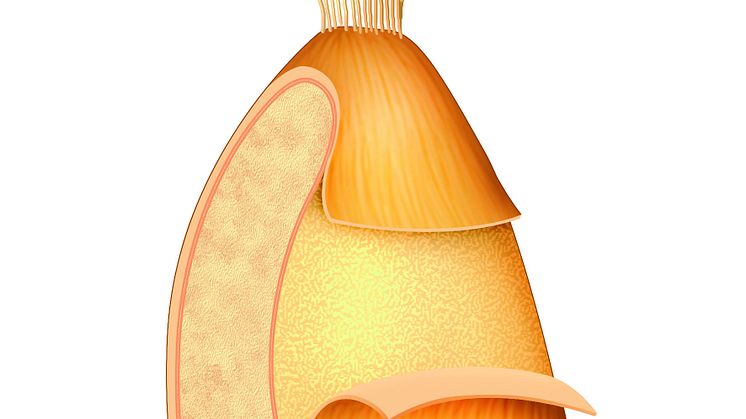
Pressemeddelelse -
Whole grain intake sets new record
Danes now have an average intake of 63 grams whole grain per day. 1 and 30% of the Danish population now eats the recommended amount of 75 grams whole grain per day. Danes with the lowest whole grain intake have now doubled their intake compared to their previous average. This is the result of a campaign driven by the Danish Whole Grain Partnership over the past five years, a project supported by a number of Danish health organisations, the Danish Veterinary and Food Administration, and a series of food companies.
Danes have clearly acquired more of a taste for whole grains in step with the appearance of more whole grain products in the stores. The latest national dietary survey, conducted by the National Food Institute at the Technical University of Denmark, shows a positive development for both children and adults.
43% of all children and 27% of all adults now eat the recommended amount, compared to only 7% and 5% respectively, before the Danish Whole Grain Partnership started its work in 2009.
For the 25% of the population with the lowest intake of whole grains the average intake is now 23 grams whole grain per day.
“It is very gratifying to see this increase in whole grain intake in the population, particularly among those with the lowest intake. This is good for our public health, and it’s an important step in counteracting the social inequality in health that unfortunately still exists in Denmark. It is also an impressive increase in the whole grain intake among Danish children. I can only assume that Danish parents are really good at presenting their children with the many interesting whole grain products available in the market”, says Charlotte Kira Kimby, health manager at the Danish Heart Foundation.
How was this achieved?
The Danish Whole Grain Partnership works to meet a common vision to improve public health by encouraging Danes to eat more whole grains.
This is achieved by increasing the availability of whole grain products, and increasing awareness of the beneficial effects of whole grain.
Campaign manager Rikke Iben Neess means the partnership’s strength comes from this common effort:
“We have one common intake recommendation and a solid knowledge base. The orange whole grain logo has made it much easier for Danes to choose whole grains, and food companies have shown their dedication to our work by adding whole grain to multiple products”. She adds: “This means consumers have gained easier access to whole grains – both in supermarkets, bakeries, and gas stations. Also in restaurants we now find more whole grain in the bread basket”.
The campaign continues
Still, many Danes do not eat the recommended amount of 75 grams whole grain per day yet. So the Danish Whole Grain Partnership will continue its work with the purpose of increasing the intake of whole grain for another three year period.
During the coming period the partnership will focus particularly on increasing the intake of whole grains among the 25% of the population with the lowest intake.
Facts about the food instititute's dietary survey
The Food Institute at the Technical University of Denmark researched how much whole grain Danes eat, in cooperation with the Danish Whole Grain Partnership.
The calculations in the study are based on new data on Danes’ dietary habits, and new data on the whole grain content of foods available on the Danish market.
The survey’s data was collected between April 2011 and September 2013. 3951 Danes 4-75 years old participated in the survey. The previous survey of Danes’ whole grain intake dated back to 2004.
Whole grain facts
The intake of 75 grams whole grain per day is one of the official Danish dietary recommendations – but many Danes still do not eat enough whole grain. This is why the Danish Whole Grain Partnership works toward an improvement in public health by promoting the intake of whole grains in Denmark.
Benefits of whole grains
• To eat more whole grains is one of the official Danish dietary recommendations. When you live up to these recommendations you get your need for vitamins, minerals and other important nutrients covered. Also, it lowers your risk of developing lifestyle diseases such as cardiovascular diseases, type II diabetes, and some cancer types. At the same time, it helps prevent weight gain.
• Whole grains taste great.
What is whole grain?
Whole grains can be both whole and split kernels, or be ground to whole grain flour. The important detail is that all parts of the grain are in the product – also the bran. This is where most of the dietary fibres, vitamins, and minerals are found.
Whole grains are: wheat, rye, barley, oats, brown and red rice, millet, dried maize, and sorghum.
So it is easy to eat enough whole grains, e.g. if you eat oats, use whole wheat kernels in a salad, if you choose whole grain pasta and whole grain breakfast cereals, or if you eat whole grain bread. This applies both to crisp bread, rye bread, and white bread, as long as it is baked with whole grain flour.
Look for the orange whole grain logo when you shop for groceries. This ensures you choose products with high whole grain content. The Danish Veterinary and Food Administration recommend that adults eat 75 grams whole grain per day. This is the equivalent to 1-2 slices of rye bread, and a small portion of oats per day.
For children 4-10 years old the recommendation is 40-60 grams whole grain per day.
Related links
Emner
Kategorier
The Danish Whole Grain Partnership is a public-private partnership formed by the Danish Veterinary and Food Administration, the Danish Cancer Society, the Danish Heart Foundation, the Danish Diabetes Association, the Danish Association of Clinical Dieticians, and a series of food companies.


